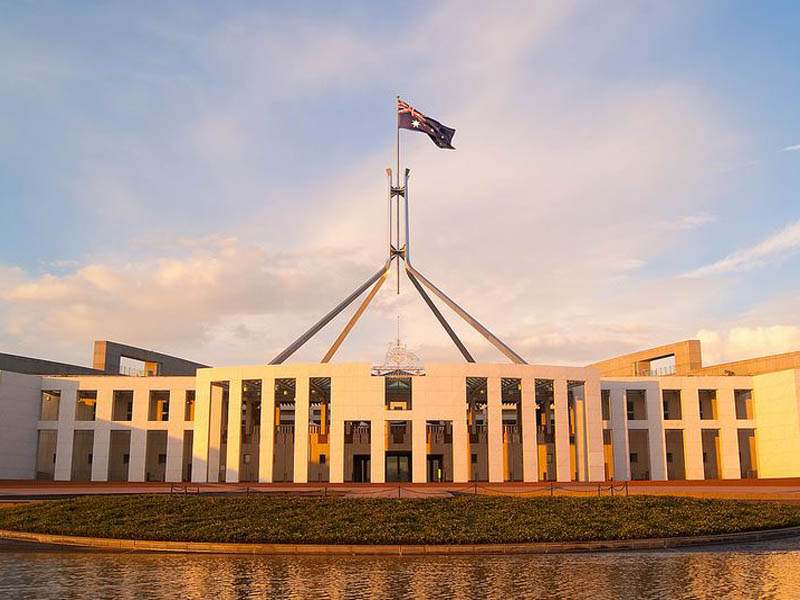The resignation of Digital Transformation Agency chief Gavin Slater highlights the curiously circular thinking behind government’s ambitions to deliver better digital services to the Australian people.
That thinking has now come full-circle in relation to the desirable professional characteristics for a CEO of the agency/office charged with delivering digital transformation.
And it also underscores – again – the bleeding obvious: Change is hard, and the digital transformation of large-scale organisations with entrenched systems, processes and culture is very hard indeed.

This government has been rightly ambitious about its transformation agenda. And it has shown a willingness to change track – and horses – mid-race where it sees progress is sub-optimal.
But surely there is a structural policy issue here. The DTA does not have the bark nor bite nor carrots-on-a-stick to deliver what it’s being asked to do.
No doubt CEO-in-waiting Randall Brugeaud will by mentioned in dispatches for his unflinching bravery in the face of impossible odds by taking the role. But it is an open question whether the organisation remains in its current form or whether it is blown up altogether.
Certainly it is doubtful the DTA will remain as it is after the next election, regardless of the outcome.
The four highly-regarded executives previously selected to run the Digital Transformation Agency and its predecessor Digital Transformation Office were all considered right for the job when they were appointed. And yet there have been four. With the fifth starting next month.
When the DTO was announced as an independent agency within the Communications Portfolio, David Hazlehurst was shifted from Prime Minister and Cabinet to become the organisations interim-CEO – the career public servant came with a set of skills and insider connections to build the agency structure and personnel from scratch.
Paul Shetler was brought in as the ultimate outsider. An aggressive digital disrupter from the UK Government, the dual UK-US citizen was hand-picked by Malcolm Turnbull as an exemplar of the UK’s Government Digital Service, on which the DTO was based.
Mr Shetler had spent most of his career in the private sector. He spend 16 months running the DTO before it was restructured. He spent a few short weeks as the Australian Government Chief Digital Officer, before resigning when it became clear the direction the restructure was taking delivery.
Nerida O’Loughlin was appointed as the ultimate Canberra insider charged with modelling the DTA as interim CEO while a replacement for Paul Shetler was found. The restructure largely stripped delivery capability out of the organisation, replaced with audit and oversight responsibility.
Gavin Slater took the helm a year ago. He too was an outsider, but one with a more mainstream, big organisation IT provenance. Coming from a big bank and a background in big iron, Mr Slater brought direct private sector experience in big tech change management programs.
And now the CEO position is to be filled by Randall Brugeaud, a Canberra-based, Canberra insider from the traditional public service IT function.
Leaving aside the interim CEOs, you can see the rapid transition of the role.
It starts with Shetler as a disruptive outsider with an aggressive transformation role, to Slater as a mainstream outsider with the more passive transformation role, and finishes up with Brugeaud as a Canberra insider with a role that looks – to the untrained eye – to have been reduced to policy and audit.
So when critics of the DTA specifically and the government’s digital transformation efforts more broadly say things like “the DTA is AGIMO all over again” or that the DTA “has been eaten by Canberra”, you can see where its coming from.
Handing ICT procurement oversight to the DTA was supposed to have given the agency some teeth. It was supposed to allow it to start kicking down doors and taking names when big government tech programs went off track.
It didn’t work. The DTA had been so de-fanged by the O’Loughlin restructure that it no longer mattered whether the agency could identify problems, because there was little it could do about it once it had.
What’s the point of its audit responsibilities if it can’t act where it finds shortcomings? Anyone who saw Labor’s Doug Cameron spit the dummy in disgust at the DTA’s last Estimates appearance over a failed $20 million apprenticeship management project will understand this.
It doesn’t need to be said that the reputational damage the DTA has suffered along the way has been significant. It is supposed to be an engine room for transformational change, but it is nothing of the sort.
The real problem is that even if the DTA sought to build a world-class engine room for digital transformation right now, it would struggle to attract the talent to its cloistered, Canberra-centric and inward-looking view of the world.
The Digital Transformation Agency has been given an impossible task. It is currently taking all the blame for failed projects. But it isn’t tasked with fixing anything.
Gavin Slater said when he announced his resignation last week that to do the job effectively, the CEO needed to be in Canberra five days a week. That was a tough ask for someone who is Melbourne-based.
But if ever there was a role for an outsider to run a federal agency, surely it is the DTA, the agency that is supposed to be driving transformation change.
Well, apparently that’s not the case anymore.
Do you know more? Contact James Riley via Email.

